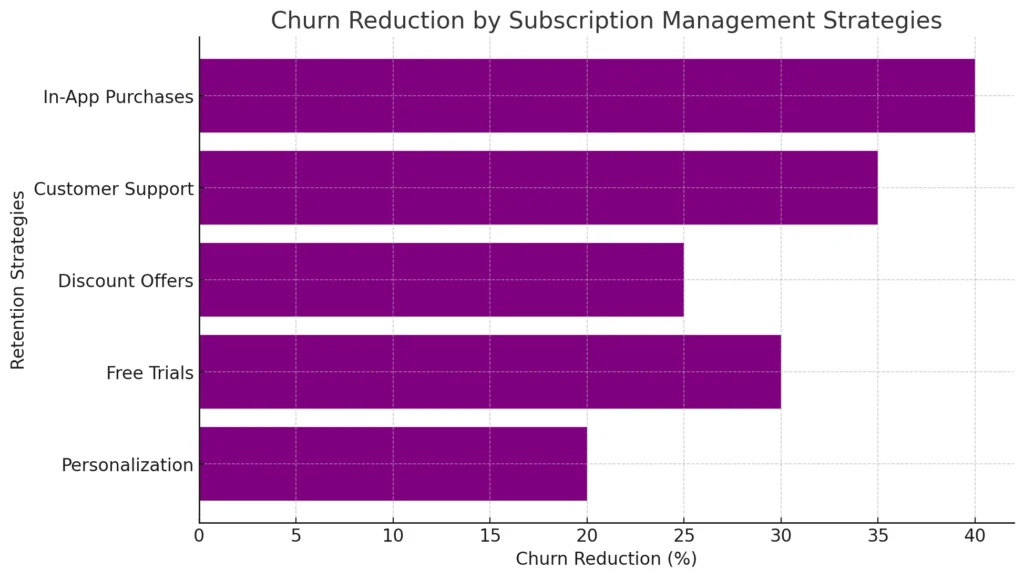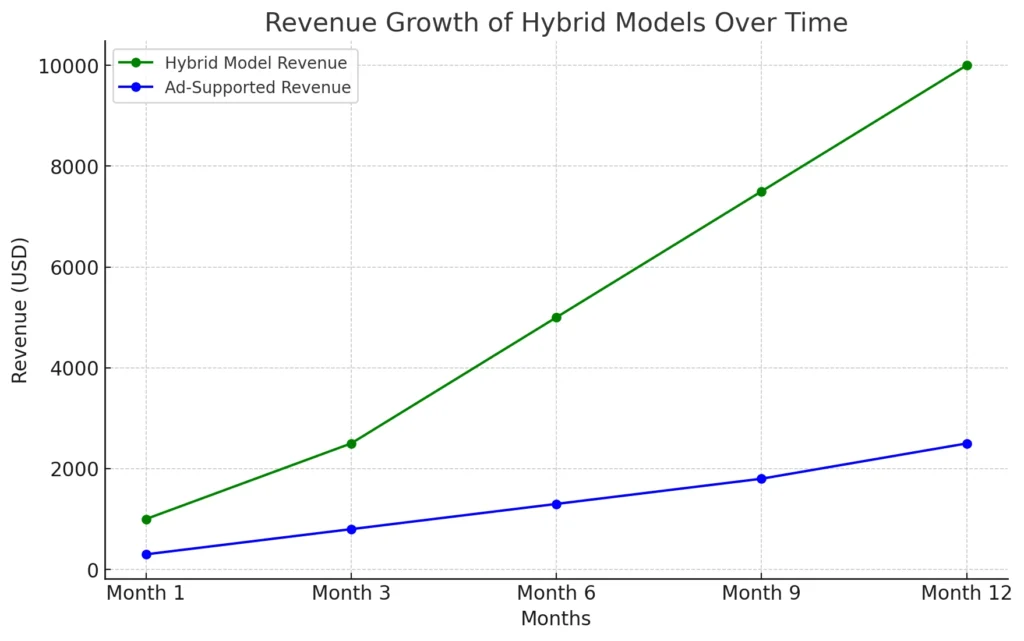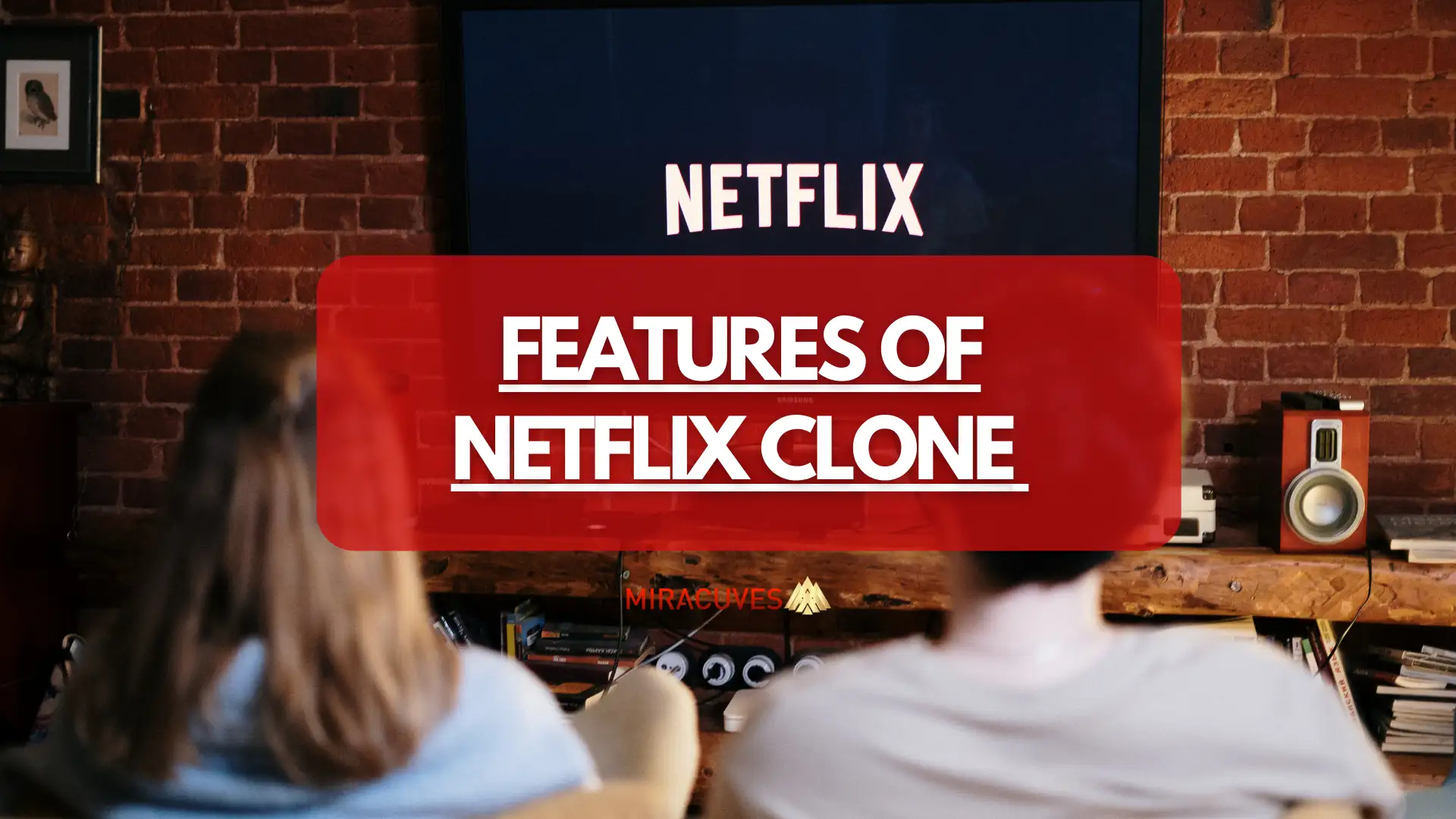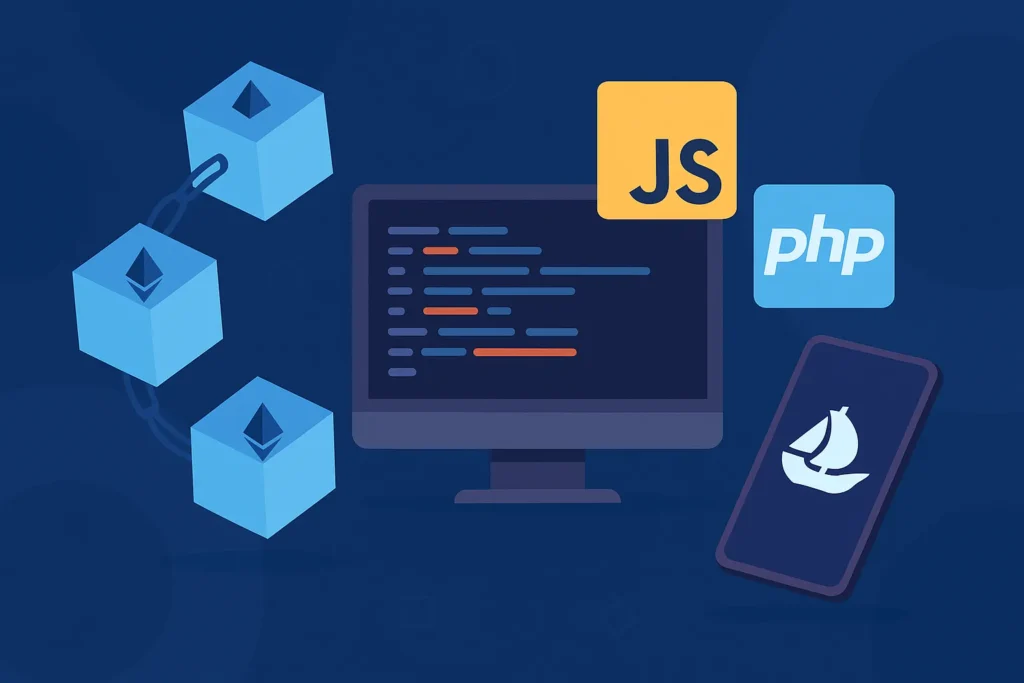The growing demand for video streaming services has led many entrepreneurs to consider building Netflix Like App. These platforms rely on innovative and adaptable subscription models to generate sustainable revenue. As competition increases, choosing the right subscription model can make or break your Netflix clone’s success. Understanding which model fits your target audience and business goals will maximize both user engagement and profits.
In this blog, we’ll explore the different subscription models for Netflix clones, focusing on how to leverage them for revenue generation, customer retention, and long-term profitability.
The right subscription model is the foundation of a successful video streaming service. Whether you’re targeting a global audience or a niche market, finding the right balance between flexibility, customer satisfaction, and revenue maximization is crucial. This guide will help you navigate the complexities of subscription management, pricing strategies, and how to make your Netflix clone stand out in a crowded marketplace.
By the end of this blog, you’ll have a clear understanding of the available subscription models and how they impact your platform’s financial performance. Let’s explore these models and determine which one will best serve your business goals.
The Importance of Subscription Models for Netflix Clone
Subscription models are the backbone of any successful streaming platform, especially for a Netflix clone. These models directly affect how a platform generates revenue, retains customers, and competes in the market.
With the rise of on-demand video streaming, consumers now expect a seamless and personalized experience. Offering various subscription options allows you to cater to different user needs and price sensitivities. More importantly, well-structured subscription models contribute to revenue generation for video platforms, helping you maximize profits while offering flexibility to your audience.
For Netflix clones, subscription models serve two primary purposes:
- Revenue Generation: Subscription models provide a steady, predictable revenue stream, whether through recurring monthly fees, one-time purchases, or in-app upgrades.
- Customer Retention: Offering a variety of subscription tiers helps keep users engaged by providing them with value that aligns with their consumption preferences, encouraging longer retention and reducing churn.
Additionally, subscription models offer flexibility in experimentation. For example, by offering limited-time free trials, freemium options, or pay-per-view features, you can analyze user behavior and fine-tune your approach based on what generates the most engagement and revenue.
Subscription models, if done right, create a win-win scenario: customers get tailored access to premium content while the platform earns consistent, scalable income.
Types of Subscription Models for Netflix Clones
When launching a Netflix clone, selecting the right subscription model is crucial for driving revenue and user engagement. Each model comes with its pros and cons, catering to different audience segments and monetization strategies. Here’s a breakdown of the most common types of subscription models and how they can be applied to your Netflix clone:
Freemium Model
The freemium model allows users to access basic content for free, with the option to upgrade to a premium, ad-free experience for additional features. This model is ideal for attracting a large audience, as free access encourages users to explore your platform with minimal commitment. Over time, many of these users convert to paid subscriptions as they seek more advanced features or exclusive content.
Benefits:
- Easy to attract a wide audience.
- Opportunities for upselling to premium plans.
Drawbacks:
- Requires a significant conversion rate to generate substantial revenue.
This model is particularly useful when building a user base from scratch, as it combines free access with the potential for long-term premium memberships.
Tiered Subscription Model
The tiered subscription model offers multiple subscription levels, each with varying features, allowing users to choose according to their needs and budget. For example, an entry-level tier might include basic access with ads, while higher tiers offer ad-free streaming, exclusive content, and more flexibility, such as multi-device access or downloadable content.
Benefits:
- Allows for flexibility and caters to different budgets.
- Increases user satisfaction by offering choice.
Drawbacks:
- Requires precise balancing to avoid cannibalizing higher tiers with lower-cost options.
This model works well when catering to a diverse audience, offering a tailored experience to users with different preferences and willingness to pay.
Pay-Per-View (PPV)
The pay-per-view (PPV) model allows users to pay for individual pieces of content rather than committing to a subscription. This approach is especially useful for premium or exclusive content, such as live events or new releases.
Benefits:
- Generates immediate revenue from high-demand content.
- Works well for occasional or non-recurring users.
Drawbacks:
- Revenue can be unpredictable, as it depends on content popularity.
PPV is best used for unique content offerings, such as event-based content or early access to exclusive material, providing an additional revenue stream without locking users into long-term commitments.
In-App Purchases
In-app purchases offer users the ability to buy additional content or features within the app, even after subscribing. This model works by monetizing content add-ons, such as behind-the-scenes footage, exclusive interviews, or Adv kianced features like offline viewing.
Benefits:
- Provides a secondary revenue stream alongside subscription fees.
- Encourages users to engage more deeply with premium content.
Drawbacks:
- Risks user frustration if monetization feels overly aggressive.
In-app purchases complement other models by allowing you to upsell users without requiring them to upgrade their subscription.
Each of these subscription models serves a different purpose, and the right choice depends on your platform’s goals and user base. Many successful video platforms adopt a hybrid approach, combining multiple models to optimize for revenue and user engagement.
Subscription Management: Key to Long-Term Revenue
A strong subscription management system is critical for maintaining a steady stream of recurring revenue and ensuring customer satisfaction. The right tools and strategies can reduce churn, increase retention, and improve the overall user experience. Efficient subscription management involves the seamless handling of payment processing, billing cycles, account management, and customer support.
Retention Strategies
Retaining subscribers is more cost-effective than acquiring new ones. A smooth onboarding process, personalized communication, and engagement reminders, such as content suggestions and service upgrades, keep users invested in your platform.
Automation and Flexibility
Automated billing and flexible subscription plans (e.g., monthly, yearly, or even custom durations) help in delivering a hassle-free experience. Providing multiple payment methods and currencies, and offering users control over their subscriptions (pausing or downgrading easily), enhances user satisfaction and reduces churn.
Minimizing Churn
By closely monitoring user behavior and implementing strategies like offering discounts to prevent cancellations or suggesting content based on previous viewing history, you can drastically reduce churn rates.
Subscription management is not just about billing; it’s about ensuring a smooth, user-centered experience to create long-term customer loyalty and drive recurring revenue.

Choosing the Best Subscription Model for Your Netflix Clone
Selecting the right subscription model is crucial for the long-term success of your Netflix clone. The ideal model should align with your target audience, content offering, and revenue goals. To make an informed decision, follow these steps:
Evaluate Your Target Audience
Understanding your audience’s preferences is key. For instance, if your platform targets budget-conscious users, a freemium or ad-supported tier might appeal. Conversely, premium content might warrant a tiered subscription model for high-value users who prioritize an ad-free experience.
Match Subscription Models to Content
The nature of your content will influence the subscription model you choose. If your platform offers niche or exclusive content, a pay-per-view (PPV) or premium subscription model might work best. For platforms with a wide variety of general content, tiered subscriptions can provide flexibility for different types of viewers.
Monetization Strategy: Combining Models
Hybrid models are gaining popularity. For example, platforms like Hulu combine ad-supported, subscription-based, and premium pay-per-view options, offering a range of revenue opportunities. By diversifying your revenue streams, you can cater to various audience segments and optimize profit.
Case Studies & Real-World Examples
Look at industry leaders like Netflix, Hulu, and Amazon Prime. Netflix, for instance, offers tiered subscription plans with varying levels of service (e.g., number of screens and streaming quality). Hulu successfully integrates ad-supported and premium tiers, while platforms like YouTube have adopted a freemium model with additional pay-per-view options for exclusive content.
By analyzing these examples, you can make a more informed decision on the right subscription strategy for your Netflix clone.

Maximize Profits Through Subscription Optimization
Once you’ve chosen a subscription model, the next step is to continuously optimize it to maximize profits. Subscription optimization involves refining pricing strategies, analyzing user behavior, and offering tailored features that enhance user experience and boost revenue.
User Behavior Analysis
Understanding how users interact with your platform allows you to adjust subscription offerings effectively. Tools like A/B testing can help you evaluate which pricing tiers and features drive the most conversions. By tracking metrics such as engagement, viewing patterns, and payment preferences, you can refine your subscription packages to better suit user needs.
Experimenting with Pricing Tiers
Don’t be afraid to experiment with different subscription tiers. Offering promotional discounts, limited-time offers, or free trials can attract new users and incentivize upgrades to higher-tier plans. Netflix, for example, adjusts its pricing periodically based on market demand and competitive analysis, maximizing revenue by staying flexible.
Feature-Based Upgrades
Offering premium features, such as offline viewing, multi-device streaming, or early access to exclusive content, can encourage users to move to higher subscription tiers. Continuously adding value through new content or enhanced features ensures that users remain loyal to your platform and are more likely to upgrade over time.
Subscription Lifecycle Management
Effectively managing the subscription lifecycle is key to keeping users engaged and minimizing churn. Using automated tools to handle recurring billing, payment reminders, and subscription renewal notifications helps streamline the experience for users, reducing friction and increasing customer retention.
By continuously analyzing, testing, and refining your subscription model, you can maximize recurring revenue and ensure long-term profitability for your Netflix clone.
Also Read “How to Build a Cameo Clone: A Step-by-Step Guide for Entrepreneurs“
We’ve built a Netflix clone with multiple subscription model options.
To explore how you can maximize revenue and provide your users with the best value.
Advertising-Based Models and Hybrid Approaches
Another revenue-boosting strategy for your Netflix clone is to implement advertising-based models or hybrid approaches. These combine subscription and ad revenue to create a more diversified income stream.
Ad-Supported Streaming
Offering an ad-supported tier gives users access to free or lower-cost content while generating revenue through ads. This model attracts price-sensitive users who don’t mind occasional interruptions from advertisements. You can also offer this model as a low-tier option, with premium tiers offering ad-free experiences.
Hybrid Subscription Models
Hybrid models combine the benefits of both subscription-based and advertising-based revenue. Hulu, for example, offers an ad-supported plan as well as a premium, ad-free option. This model allows platforms to cater to both budget-conscious viewers and premium subscribers, maximizing revenue by appealing to a broader audience.
Advantages of Hybrid Models:
- Flexibility: Users can choose a plan that fits their preferences.
- Revenue Diversity: Combining ads with subscriptions ensures a steady stream of revenue from multiple sources.
Challenges:
- User Experience: Too many ads can negatively impact the user experience, so ad frequency must be carefully balanced.
By offering a hybrid model, you increase your platform’s revenue potential by catering to different user groups—those willing to tolerate ads for free or low-cost access, and those willing to pay for an uninterrupted experience.

Legal and Licensing Considerations
When building a Netflix clone, it’s crucial to address the legal aspects of content licensing and regulatory compliance. Without securing the proper licenses for the content you stream, you run the risk of legal repercussions and operational shutdowns. Here’s what to consider:
Content Licensing
To legally stream movies, TV shows, or other media, you need to acquire rights from content creators or distributors. This process can be expensive, depending on the exclusivity and popularity of the content. For original content, ensuring ownership rights and distribution agreements are critical.
Regulatory Compliance
Your platform must comply with local and international laws regarding digital content distribution, including copyright laws, GDPR for data protection in the EU, and various regional restrictions. Understanding and adhering to these legal frameworks will help avoid penalties or restrictions that could harm your platform’s reputation.
Ignoring these legal considerations can lead to significant financial and operational risks. Be sure to invest in strong legal guidance to navigate the complexities of content licensing and regulatory compliance for video streaming platforms.
Technological Implementation and Security
Implementing the right technology infrastructure and security measures is essential for managing subscriptions and ensuring user trust in your Netflix clone. Here are the key aspects to consider:
Payment Gateway Integration
Seamless payment processing is critical for ensuring smooth user transactions. Integrate trusted, secure payment gateways like Stripe, PayPal, or other regional providers to accommodate various payment methods. Offering options like credit cards, digital wallets, and local payment solutions can enhance user experience.
Data Security and Privacy
With the rise of cyber threats, ensuring the safety of user data is non-negotiable. Your platform must comply with data protection regulations such as GDPR, and employ encryption and tokenization for sensitive information like credit card details. Security also involves implementing secure logins, two-factor authentication (2FA), and regular vulnerability assessments.
Recurring Billing Management
Automating recurring billing processes ensures that users are billed efficiently without any disruption to their services. This includes handling renewals, failed payments, and billing notifications. Subscription management tools like Chargebee or Recurly can help automate these processes, allowing for better customer retention.
By focusing on these technological implementations, you not only streamline operations but also build user trust, ensuring they feel safe and secure when subscribing to your service.
User Experience (UX) and Interface Design
A superior user experience is vital to ensuring long-term customer satisfaction and engagement for your Netflix clone. Here’s how to focus on key UX elements:
Ease of Navigation
Users expect an intuitive interface that is easy to navigate. A well-designed layout, clear menus, and accessible search functions can make it simple for viewers to find and enjoy content quickly.
Personalization
Offering personalized recommendations based on user behavior helps increase engagement and loyalty. Algorithms that suggest relevant content based on viewing history can significantly improve user satisfaction.
Multi-Device Compatibility
Ensure your platform works seamlessly across various devices—smart TVs, smartphones, tablets, and desktops. This increases accessibility and encourages longer viewing sessions.
Accessibility
Provide features like subtitles, audio descriptions, and adjustable display options to make your content accessible to a broader audience, including users with disabilities.
A well-crafted UX not only improves user retention but also enhances your subscription tiers by making higher-priced plans more attractive through ease of use and premium features.
Marketing Strategies to Increase Subscriptions
Effective marketing is key to growing your subscriber base. Here are strategies to maximize visibility and engagement for your Netflix clone:
Promotional Offers and Free Trials
Offering free trials or discounted subscriptions encourages users to test the platform. This helps in converting casual users into paying subscribers once they experience the platform’s value.
SEO and Content Marketing
Optimize your platform’s website and blog with targeted keywords like “video streaming” and “subscription models.” Invest in SEO to drive organic traffic. Engaging blog posts, video tutorials, and how-to guides can also build brand authority.
Social Media and Influencer Partnerships
Leverage social media platforms to engage with potential subscribers through ads, collaborations with influencers, or sharing user-generated content. Influencers can promote your platform to their followers, increasing brand awareness and driving traffic.
Effective marketing not only attracts new users but also plays a critical role in retaining current ones through ongoing engagement strategies.
Analyzing Competitors and Market Trends
Staying competitive in the video streaming space requires continuous analysis of competitors and market trends. Here’s how:
Competitor Analysis
Study other successful platforms like Netflix, Hulu, and Amazon Prime to understand their subscription models, pricing strategies, and customer retention methods. This insight can help you identify gaps in your service or opportunities to innovate.
Emerging Trends
Keep an eye on evolving trends, such as the integration of AI for personalized recommendations or VR content, which are influencing the video streaming industry. Understanding these shifts allows you to stay ahead of the competition and meet future user demands.
By consistently analyzing both competitors and trends, you can make informed decisions that position your Netflix clone for sustained growth and innovation.
Customer Support and Retention Strategies
Providing excellent customer support and implementing strong retention strategies are key to keeping users subscribed to your Netflix clone.
Efficient Customer Service
Offering 24/7 support through live chat, email, or even AI-based chatbots can help resolve issues quickly, preventing user frustration and cancellations.
Feedback Mechanisms
Implement features where users can easily provide feedback. This not only improves user satisfaction but also helps you understand pain points that need addressing.
Churn Reduction Techniques
Identify users at risk of canceling their subscriptions and offer incentives, like discounts or additional content, to retain them. Engaging users through personalized communication and content recommendations can also prevent churn.
Strong customer support builds loyalty, helping increase retention and lifetime value.
Case Studies and Success Stories
Learning from successful streaming platforms can offer valuable insights for your Netflix clone. Here’s what we can learn from established platforms:
Netflix:
Netflix’s tiered subscription model and investment in original content have helped it dominate the market. Its use of data-driven personalization ensures high user engagement and retention.
Hulu:
Hulu’s hybrid approach of combining ad-supported and premium ad-free plans allows it to cater to a diverse audience while maximizing revenue.
Disney+:
Disney+ leverages exclusive franchises to attract subscribers, showcasing the power of unique, high-demand content.
Studying these platforms will provide you with strategies to improve your subscription model and increase profits.
Pricing Strategy and Flexibility
An effective pricing strategy is essential for maximizing revenue and appealing to a wide audience for your Netflix clone. Here’s how to approach it:
Dynamic Pricing
Consider adjusting your prices based on demand, region, or content exclusivity. For instance, limited-time promotions or regional pricing can help drive subscriptions in new markets or during peak seasons.
Subscription Flexibility
Offer multiple subscription plans such as monthly, yearly, or family bundles. Providing flexibility allows users to choose what best fits their budget, increasing the likelihood of them subscribing and sticking with the platform.
Strategically optimizing your pricing models ensures you cater to diverse user preferences and increase long-term revenue.
International Market Adaptation
As your Netflix clone grows, expanding into international markets offers significant revenue potential. Here’s how to effectively adapt:
Localization
Localizing your platform involves translating content and adapting your user interface for different languages and cultures. Offering local content and using region-specific marketing strategies also helps connect with audiences in new markets.
Multi-Currency & Payment Methods
Accepting payments in multiple currencies and integrating region-specific payment methods will make it easier for users to subscribe and engage.
International expansion, when done right, can unlock vast new revenue streams for your platform.
Conclusion
Choosing the right subscription model for your Netflix clone is essential for maximizing profits and ensuring long-term success. By evaluating your target audience, offering flexible pricing tiers, and leveraging hybrid models like ad-supported and premium options, you can cater to a diverse user base and optimize your revenue. Continuous optimization, strong customer support, and expansion into international markets will help you stay competitive in the rapidly growing video streaming industry.
In summary, by combining the best practices from leading platforms, refining your strategies, and adapting to market trends, you can build a profitable and sustainable Netflix clone.
Ready to turn your vision into reality? At Miracuves, we specialize in developing custom streaming platforms like Netflix clones, designed to maximize your profits. Whether you’re looking for the perfect subscription model or advanced features, we provide end-to-end solutions tailored to your business needs. Start building your next big success today!
Get in touch now to explore how we can help transform your streaming platform idea into a profitable venture.
Want to build a Netflix clone and maximize your profits?
Our team of experts can help you choose and implement the best strategy for your platform.
FAQs
What are the most popular subscription models for a Netflix clone?
The most popular subscription models include freemium, tiered subscription, pay-per-view (PPV), and hybrid models that combine ad-supported and premium plans.
How does a freemium model work for a Netflix clone?
In a freemium model, users get basic content for free but can upgrade to premium, ad-free content by subscribing to a paid plan.
What is the benefit of using a tiered subscription model?
A tiered model offers multiple pricing levels, allowing users to choose between basic and premium services, maximizing flexibility and revenue.
How do hybrid models generate revenue for video streaming platforms?
Hybrid models generate revenue by offering both ad-supported free plans and premium, ad-free subscriptions, appealing to a broader audience.
Why is subscription management important for recurring revenue?
Efficient subscription management reduces churn, ensures smooth billing, and enhances user retention, leading to consistent recurring revenue.
How do pay-per-view (PPV) models work for video streaming platforms?
In a PPV model, users pay for individual pieces of content, such as live events or exclusive releases, rather than subscribing to the entire service.
Check out our popular video content app solutions offered by Miracuves – built for performance and scale:
TikTok Clone Solution – Short-form video sharing with viral potential, interactive features, and easy content creation
Netflix Clone Solution – Seamless streaming with an intuitive interface, offering high-quality video delivery
YouTube Clone Solution – A versatile platform for video uploads, views, and social engagement







